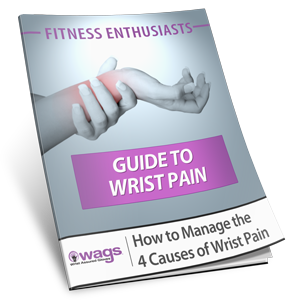What Is the Carpal Tunnel?
Carpal tunnel syndrome is one of the most common nerve disorders. The carpal tunnel is located on the palm side of the hand, at the wrist, just beneath the skin surface. It’s named the carpal tunnel because eight small wrist bones known as carpals form three sides of the tunnel. The median nerve and the tendons of several flexion muscle pass through the carpal tunnel.
About Carpal Tunnel Syndrome
Carpal tunnel syndrome (CTS) is a painful, progressive condition that occurs when the median nerve in the wrist is compressed in the tunnel. Symptoms include tingling, burning, or itching and numbness in the palm of the hand and the fingers, especially the thumb and index finger. CTS affects up to 6% of adults in the United States. The prevalence increases with age, and it’s common in people between the ages of 45 and 64. There is a greater incidence in women.
Symptoms of Carpal Tunnel Syndrome
Symptoms usually develop over time and first appear during the night or early morning. You might feel like shaking out the hands, or if you sleep with your wrists curled in, your fingers might be numb when you wake up. You may wake repeatedly during the night.
There are three main symptoms associated with CTS:
- Pain
- Numbness
- Tingling
These symptoms mainly occur in the thumb, index, middle finger, and half of the ring finger. Symptoms can extend to the hand and up the forearm.
Symptoms can persist during the day as CTS worsens. You begin to lose grip strength and have difficulty picking up or grasping small objects. Typing on a keyboard, buttoning buttons, and opening bottles becomes challenging. The symptoms may worsen to a tingling, burning sensation and pain after using the hand or if the hands have been inactive for a period of time, especially if resting the wrist causes contact or compression. Over time, if left untreated, the muscles at the base of the thumb get weak and you can lose your sense of hot and cold.
How to Reduce Your Risk
There are several things you can do to reduce your risk of developing CTS.
- Don’t grip too hard when performing manual tasks
- Don’t overbend the wrist all the way down or up
- Try to sleep and work with the wrists fairly straight
- Avoid repetitious movements, especially flexing and extending the wrists
- Aim for good postural alignment, which prevents strain on the wrist and hands
- Redesign your workstation to reduce awkward wrist positions
- Rest and take breaks when performing tasks that use the hands to protect against the long-term effects
- Keep the hands warm by wearing gloves in a cold environment
- Wear a splint at night to keep the wrists from bending
- Prevent carpal tunnel with a pair of Wrist Assured Gloves
WAGs can help prevent carpal tunnel syndrome thanks to the gel pad’s V cut-out, which allows you to do push-up and planks without any putting pressure on the median nerve!
Order Your Wrist Support Gloves Today
Stay tuned to read all about what to do if you have carpel tunnel syndrome in a future post. For now, let’s hope you can keep it at bay! Take the first step toward better wrist fitness and health by finding the right pair of WAGs for you today. We offer a number of styles to match exactly what you need, whether it’s our original ergonomic glove design with a contoured gel pad and comfortable fabric or our sleek cross training style with a non-slip palm and a slimmed down gel pad.
Explore our site to learn more about the science behind our wrist fitness gloves, and order your pair today for a future free of pain!




